An FX-mount lens, the Tamron 85mm f/1.8 has been specifically designed with a larger image circle for use on full-frame Nikon DSLRs such as the D5, the D810, and the D750. The short telephoto focal length and large maximum aperture make it a useful option for portrait photography, as well as for shooting news events, weddings, or even certain sports in low light.
The SP abbreviation in the lens name denotes that it’s one of Tamron’s Superior Performance optics, so we can expect some pretty decent scores. VC indicates the inclusion of Tamron’s Vibration Compensation lens-based image stabilization system. This is useful for shooting relatively static subjects in low light, allowing you to get blur-free shots with slower-than-usual shutter speeds. The lens also features Tamron’s Ultrasonic Silent Drive (USD) autofocus motor, which helps ensure quick and quiet autofocus (as well as full autofocus on entry-level DSLRs that don’t feature an autofocus motor in the camera body).
The Tamron 85mm f/1.8 is also compatible with Nikon APS-C DSLRS, such as the D500, offering an equivalent 127mm focal length that, although getting a little long, remains a popular focal length for portrait and event photography on crop-sensor DSLRs.
Specifications
- 13 elements arranged in 9 groups
- F1.8 constant aperture
- Sonic-type motor
- LD and XLD elements
- 9x circular aperture blades
- 31.5” (0.8m) minimum focus
Highlights
- Excellent sharpness
- Image stabilization (VC)
- USD autofocus motor
- Wide f/1.8 aperture
- Cheaper than some of the competition
Potential drawbacks
- Heavy vignetting at f/1.8
- A little heavy at 700g
Overall image quality
Delivering excellent all-round performance on all Nikon full-frame DSLRs, the Tamron 85mm f/1.8 achieves a top score of 45 points on the 36.3Mp D810.
Sharpness is outstanding, scoring 36 P-Mpix on the D810, offering high levels of uniform resolution at all aperture settings, including wide-open at f/1.8. Despite lower overall and sharpness scores of 41 points and 20 P-Mpix on the 20.8Mp Nikon D5, as well as 41 points and 24 P-Mpix on the 24.3Mp Nikon D750, the Tamron 85mm f/1.8 maximizes the full resolution potential on all three of these Nikon full-frame DSLRs.
Excellent light transmission of 2 TStop ensures lots of light for a bright viewfinder image and autofocus sensor, which should ensure good low light autofocus performance. The Tamron 85mm f/1.8 also controls chromatic aberration well, with only very minor fringing evident between f/1.8 and f/4, which is completely resolved by f/5.6. There’s virtually no geometric distortion evident either (as you’d expect from a prime lens of this focal length). The only slight quibble therefore is some corner shading (–1.6Ev) using the maximum f/1.8 aperture, which would benefit from some correction in post-production. Less significant vignetting occurs at f/2.8 and f/4 as well, and images are free from corner shading only from f/5.6 onwards on Nikon full-frame DSLRs.
Image quality compared
Tamron 85mm f/1.8 vs. Zeiss Milvus 85mm f/1.4 vs. Nikon 85mm f/1.8G
In third place overall for all 85mm primes we’ve tested on the Nikon D810, the Tamron 85mm f/1.8 sits just behind the $4490 Carl Zeiss Otus 85mm f/1.4 and the $1799 Carl Zeiss Milvus f/1.4. The Tamron lens also ranks ahead of both the f/1.8G and f/1.4G versions of Nikon’s own Nikkor 85mm, which sit in fourth and fifth place, respectively.
In our more in-depth analysis of the Tamron 85mm f/1.8’s main competition, we’re focusing on the more affordable Carl Zeiss Milvus f/1.4 and the equivalent Nikkor option, the Nikon 85mm f/1.8G.
With its wider maximum aperture and improved light transmission, the Carl Zeiss Milvus f/1.4 achieves an exceptional DxOMark score of 46 points — but that’s just one point ahead of the Tamron 85mm f/1.8. Both of these third-party 85mm primes offer outstanding sharpness on the D810, scoring 36 P-Mpix and displaying high levels of acutance (between 70% and 80%), together with uniform edge-to-edge sharpness, at all aperture settings.
The lower headline vignetting score of –1.9Ev for the Milvus lens was recorded at its maximum f/1.4 aperture; it actually displays slightly less corner shading at f/1.8 and f/2.8 compared to the Tamron. The Milvus also scores slightly higher for chromatic aberration compared to the Tamron, but fringing isn’t really an issue on either lens. Scores are very comparable with the cheaper own-brand Nikon 85mm f/1.8G in all lens metrics — with the exception of sharpness. Achieving an overall sharpness score of 26 P-Mpix, the Nikon 85mm f/1.8G doesn’t quite offer as high acutance as the Tamron and is a little more inconsistent in the outer field, too, although it’s still very good. The Tamron is marginally sharper than the Nikon 85mm f/1.8G and a little sharper and more uniform than the Nikon at f/2.8 and f/4 as well. Other lens metrics are very similar, however, so it’s really the sharpness that sets them apart.
Tamron 85mm f/1.8 Nikon vs. Tamron 85mm f/1.8 Canon
If we consider the performance of the Nikon- and Canon-mount versions of the Tamron 85mm f/1.8, the Nikon version comes out on top for sharpness and low-light performance. Its better overall score of 45 points when attached to the 36Mp Nikon D810 (compared to 42 points on the Canon 5DS R) is a reflection of the improved low-light performance possible when used on the Nikon DSLR.
Although the Nikon version’s headline sharpness score of 36 P-Mpix on the D810 is lower than 38 P-Mpix recorded on the Canon 5DS R, you can see from the sharpness profile at f/1.8 that the Nikon version offers improved acutance at all field positions past 10% and achieves nearly 80% acutance from 40 to 100%, which is impressive at f/1.8. Vignetting at f/1.8 is moderately better on the Nikon version, too, but the rest of the lens metrics remain the same.
Conclusion
The Tamron 85mm f/1.8 is the highest-scoring of all the 85mm prime lenses under $1000 that we’ve tested on Nikon full-frame DSLRs. Securing excellent all round lens metric results, it delivers outstanding overall sharpness, with high levels of acutance and uniform edge-to-edge sharpness at all aperture settings.
Excellent image quality is allied with a good set of features too, including Tamron’s VC image stabilizer and USD autofocus motor, which improve low-light performance.
Its maximum f/1.8 aperture has lower light transition compared to the Carl Zeiss Milvus 85mm f/1.4 and Nikon’s own $1597 Nikkor 85mm f/1.4G, which could be an important factor in your buying decision, but these faster aperture lenses also cost significantly more. The new Sigma 85mm f/1.4 Art will make for an interesting rival to the Tamron in a similar price bracket (and we’ll bring you those scores as soon as possible), but for now the Tamron short telephoto 85mm prime lens offers the best value for Nikon full-frame shooters.
Also consider
For greater insight into the performance of alternatives to the Tamron 85mm f/1.8, see our D800E and D750 best lens reviews and our in-depth Zeiss Otus 85mm f/1.4 and Zeiss Milvus 85mm f/1.4 reviews.


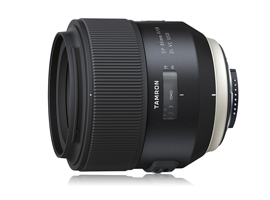


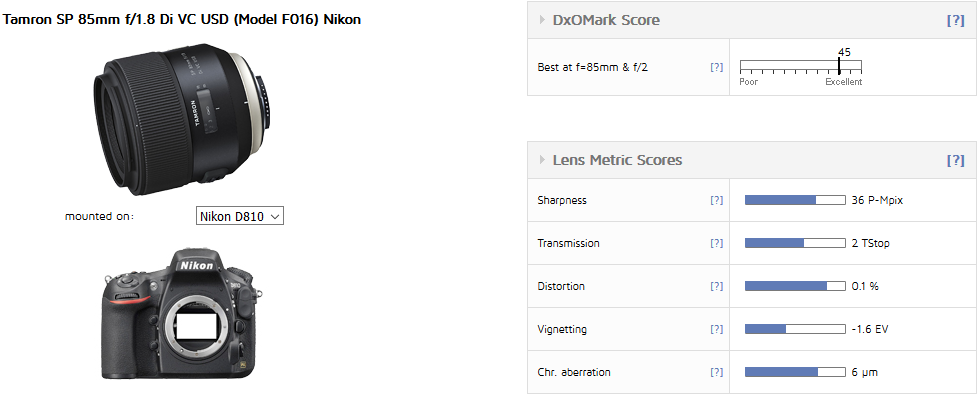
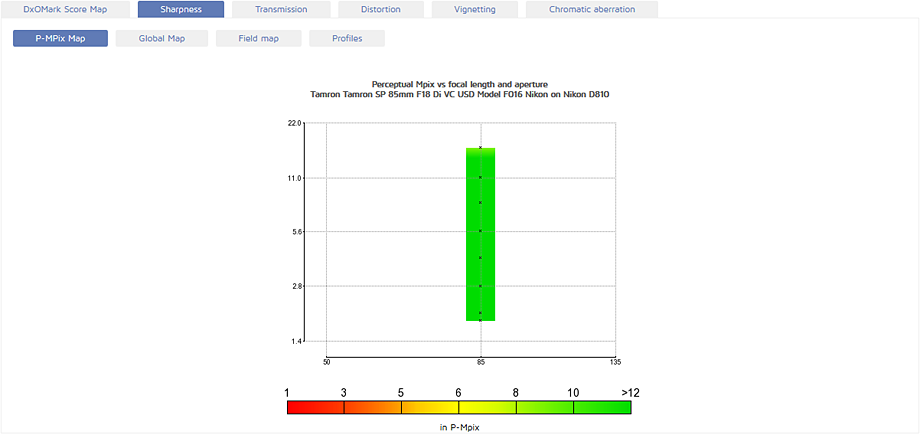
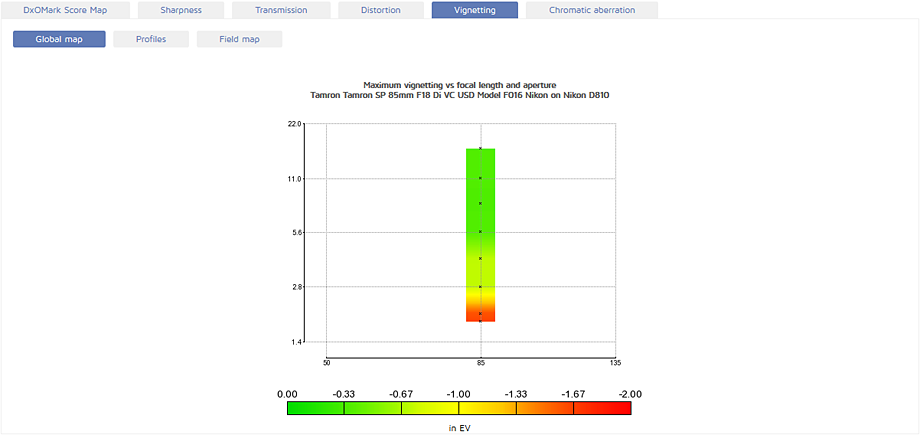
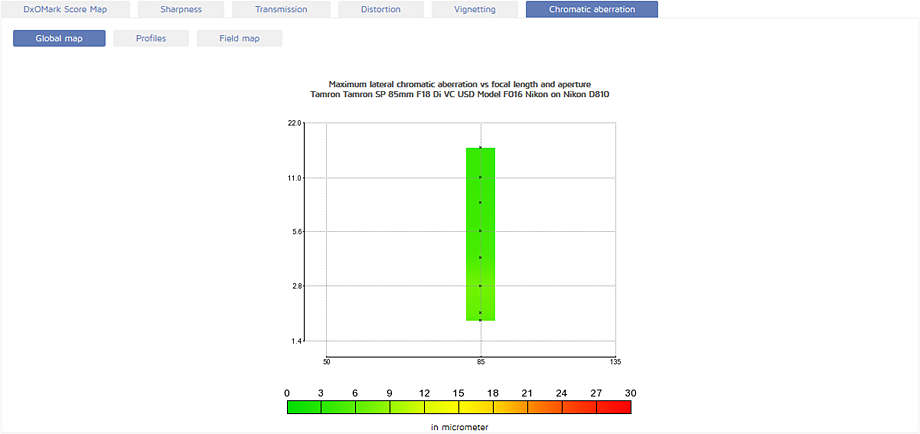
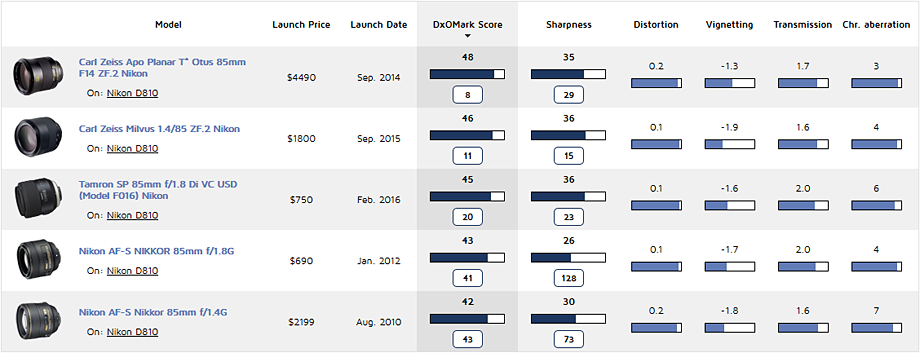
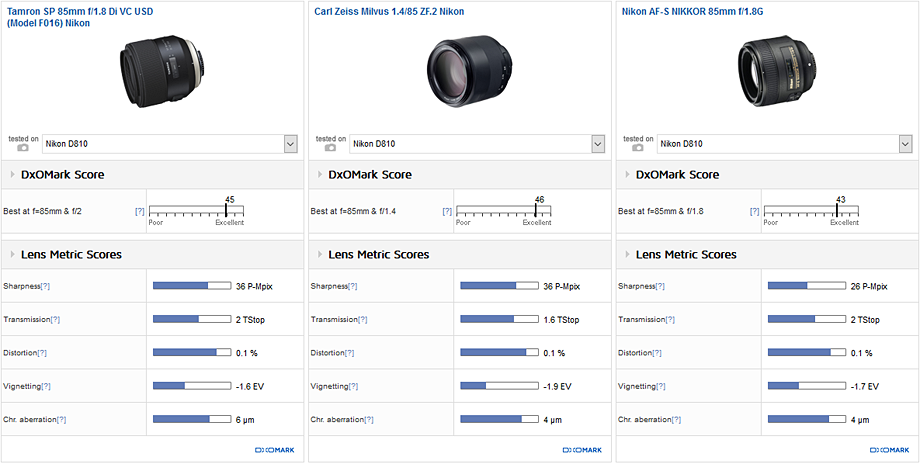
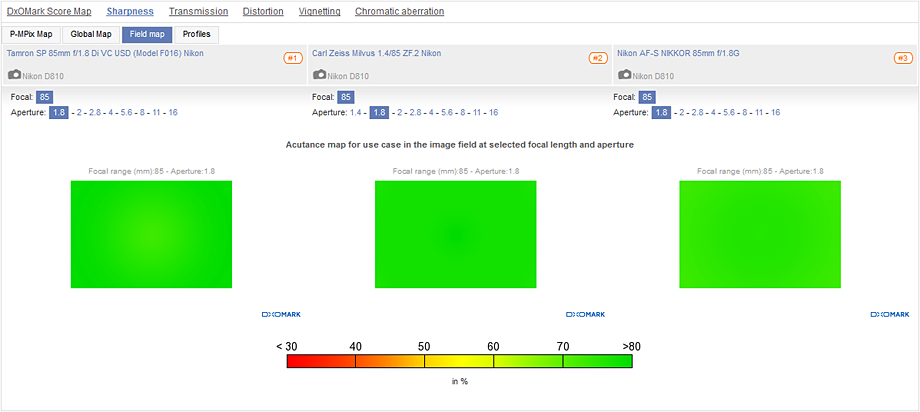
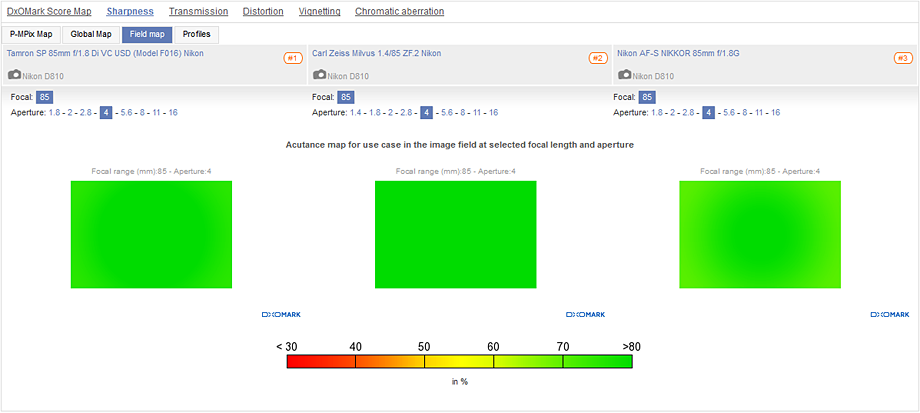
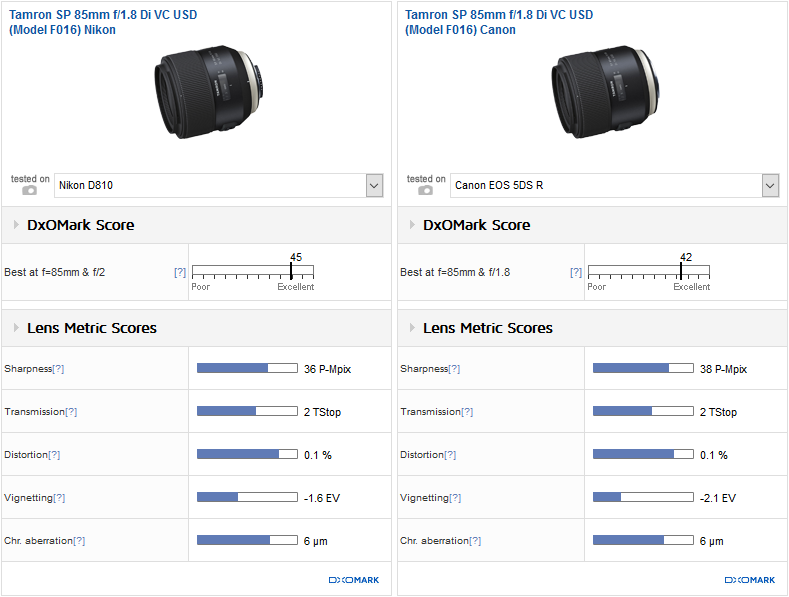
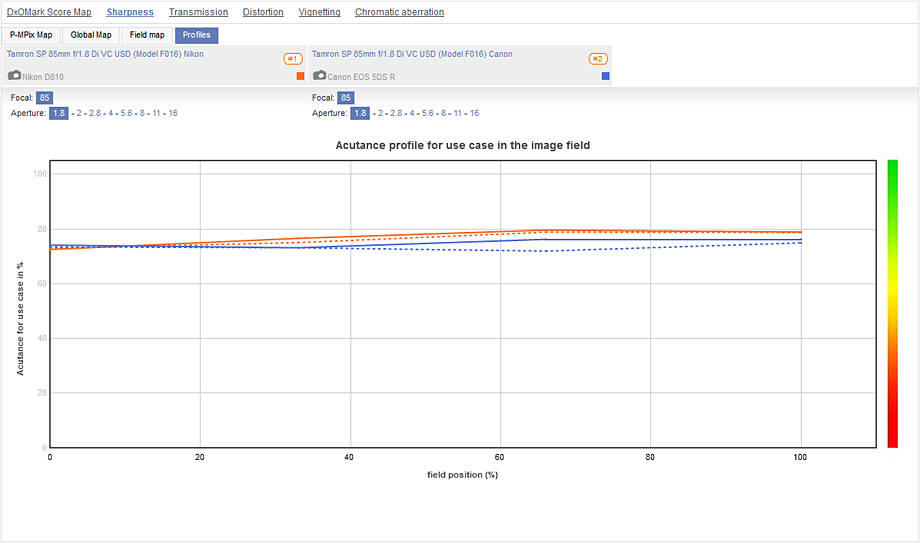
DXOMARK encourages its readers to share comments on the articles. To read or post comments, Disqus cookies are required. Change your Cookies Preferences and read more about our Comment Policy.